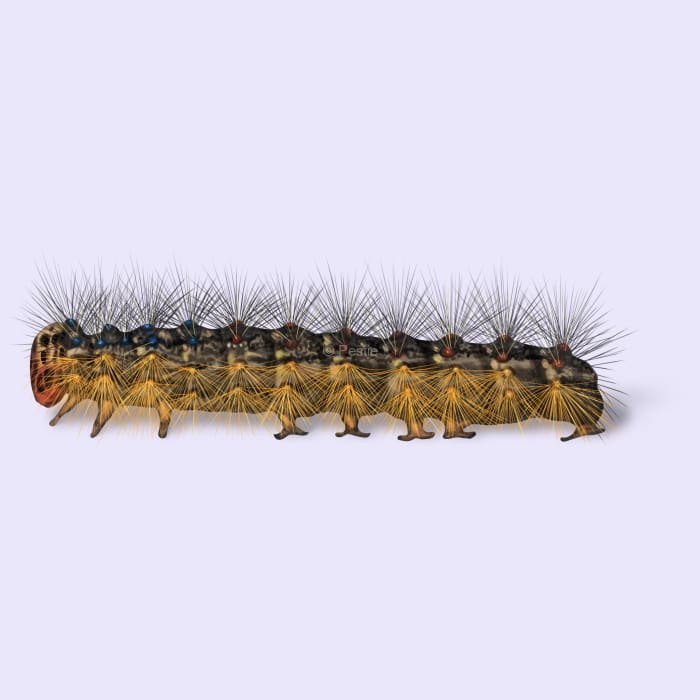How to identify and get rid of gypsy moth larvae

Gypsy moths got you stumped? Here’s what to do
Are your trees looking a little rough in the middle of summer? Do you live in the northeastern part of the US? Well, you might be dealing with gypsy moths. These caterpillars are notorious for their ability to strip trees of their leaves, leaving them vulnerable to other threats. While the adult moths are relatively harmless, it’s the caterpillars that do the real damage, chomping through leaves like there’s no tomorrow.
Gypsy moths spend the winter as eggs, they hatch in the spring, and the caterpillars start feeding right away. By the time they’re done, your trees might look more like winter than summer.
They are originally from Europe and parts of Africa, but they were accidentally released in 1869. Someone had the idea of breeding the moths with silk moths to improve the silk production industry in the 19th century. However, they got out of their facility and began spreading across the US, damaging forests and impacting ecosystems.
How to identify gypsy moth larvae
Gypsy moth infestations are easy to spot if you know what to look for. The caterpillars are easily recognizable, with their hairy bodies, blue and red dots, and habit of feeding in large groups. The adult males are brown and can fly, while the females are white, bigger than males, and don’t fly. Look for tan, fuzzy egg masses as well—these are often the first sign of an infestation.
How big are gypsy moth larvae?
Gypsy moth caterpillars can grow up to 2 inches long.
What pests look like gypsy moths?
In the caterpillar stage, they often can look similar to bagworms.
Where do gypsy moth larvae live?
These moths are typically found in the northeastern parts of the US, but they continue to spread west over time. They are currently as far west as Wisconsin.
How to get rid of gypsy moth larvae
Catching gypsy moth issues early is always better before tree damage becomes too much. You can manage gypsy moth caterpillars by:
- Handpicking: Remove and destroy egg masses, caterpillars, and pupae by hand, especially during early spring.
- Encouraging natural predators: Birds, small mammals, and beneficial insects like parasitic wasps can help control gypsy moth populations.
- Cleaning outdoor surfaces: Regularly clean outdoor furniture, fences, and other surfaces to remove egg masses and prevent further infestation.
Try a solution like Pestie! Get your customized plan here.
Treat gypsy moths with Pestie
If you're still having trouble keeping gypsy moths away, the best option is to use a pro-grade, effective pest control solution like Pestie.
Pestie is a do-it-yourself pest control solution that's specially designed to keep gypsy moths and other pests away from your home.
With Pestie, you can rest easy knowing that your living space is protected and free of creepy crawlies. And the best part? It's designed for people, pets, and the planet, so you can say goodbye to harsh chemicals and hello to peace of mind!
- Save hundreds compared to traditional annual pest plans
- People, pet, and planet-friendly
- Pro-grade customized formulas
Quick facts
- Scientific name
Lymantria Dispar Dispar
- Other common names
LDD Moths, European Gypsy Moths, North American Gypsy Moths, Spongy Moths, Gypsy Caterpillars, Tent Caterpillars
- Colors
Red and blue dots
- Life span
6-8 weeks
- Diet
Oaks, but also other hardwoods
How dangerous are Gypsy Moths?
Low danger risk
While gypsy moths don’t pose a direct threat to humans, their caterpillars can cause significant damage to trees. Some people can have an allergic reaction to the hairs of the caterpillar.
There is a virus that can affect the behavior of gypsy moths. The virus causes the caterpillars to climb high in the canopy of the tree, and then the caterpillar slowly disintegrates. The particles of the caterpillar coat the foliage below, and other caterpillars consume the virus.








